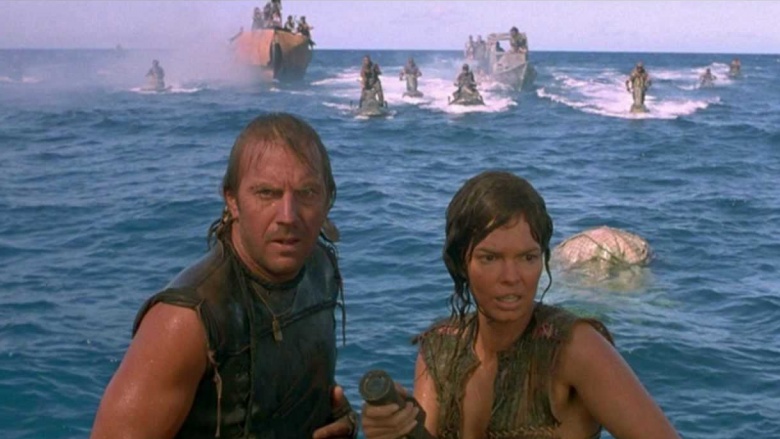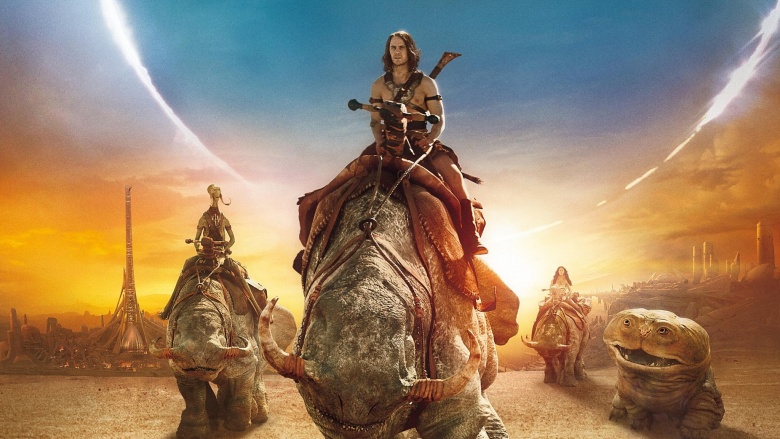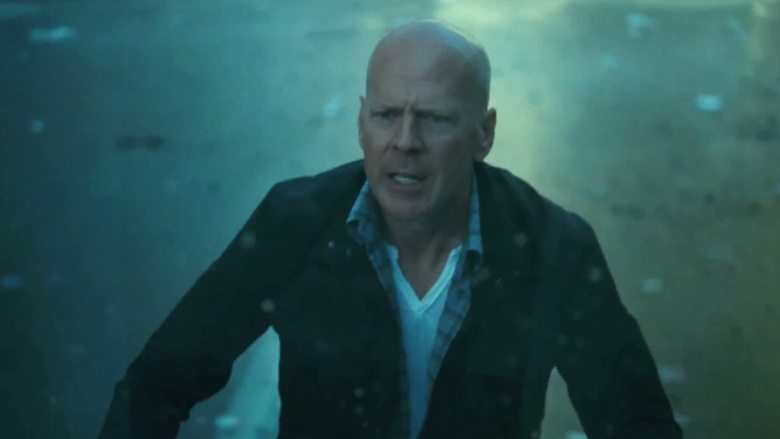Terrible Movies People Loved Overseas
While Americans are content to say that they live in the greatest nation on Earth, there is always a nagging feeling of inferiority when it comes to being classy or having good taste. The BBC, with all its posh accents and serious period dramas that your mom and girlfriend watch on Netflix, are generally the reference point for high-class pop culture. However, that is a lie. Americans DO have standards, by golly, and it's most obvious when looking at the world's enthusiastic embrace of some of Lady Liberty's greatest movie catastrophes. America might be the home of fanboys and diehards, but even we draw the line somewhere when deciding whether a movie is good or bad.
Waterworld (1995) - $176 million foreign box office
Perhaps the best place to look at the beginning of this trend is the Kevin Costner environmental plea/action adventure Waterworld. At the time the most expensive movie ever made, Waterworld had massive sets and a simple concept: in a world where the oceans have risen and land is scarce, bad guys and good guys are searching for a place to plant their flag. This kind of set-up is pretty easy to translate across cultural and language barriers. The film's simple premise, lavish sets, a hugely bankable star and its huge price tag made "Fishtar" irresistible to foreign audiences, while domestic audiences didn't take the bait.
Golden Compass (2007) - $302 million foreign box office
Based on the first of a trilogy of books by Philip Pullman and featuring a stellar cast including Nicole Kidman, Daniel Craig, Eva Green as well as Ians Mckellen and McShane, The Golden Compass should have been a slam dunk for audiences that were throwing gobs of money at other high-concept fantasy series like Harry Potter and Lord of the Rings. The movie proved to be the exception among American audiences, as it made only $72 million at home. The story's anti-religion overtones kept Americans away from theaters, but foreign audiences embraced the story of a young girl, living in an alternate reality Oxford, fighting against an evil organization. An underdog story, wildly popular source material, and an excellent international cast proved to be a powerful draw to foreign audiences.
John Carter (2012) - $211 million foreign box office
Tim Riggins facing off against "perfect villain," Mark Strong, and fighting space aliens on Mars sounds like a pretty awesome set-up for a movie. Its "Gladiator in space" concept and heavy use of special effects made it the kind of straightforward action-adventure popcorn-muncher that foreign audiences love. A movie doesn't need a ton of dialogue or emotional complexity when it's pitting a shirtless, high-jumping Taylor Kitsch against an army of Star Wars alien rejects. Not that America agreed, only paying $73 million for a film blandly named after everybody's accountant.
A Good Day to Die Hard (2013) - $237 million foreign box office
This one's truly sad — the fifth installment of a franchise featuring a character that started out as a truly American hero and helped revolutionize the action film. Bruce Willis' John McClane is one of the greatest, most influential characters introduced in the last 30 years of film. And that's why this movie was a can't-miss overseas — it hit the trifecta of box office success. The movie had a massively bankable American star ,reprising his role in a hugely popular action franchise, in a well-known international location like Russia. At home, however, the introduction of McClane's secret agent son and (to us) tired Russian backdrop might have finally done what thieves, foreign dictators, vengeful siblings, and whiny hackers could not do: put John McClane down for good.
Avatar (2009) - $2 billion foreign box office
How can this movie be on here, right? It's only the highest-grossing film of all time, with a grand total of nearly $2.8 billion earned worldwide. But consider this — does anybody actually like Avatar? When was the last time the movie was mentioned other than James Cameron emerging from his underwater cocoon to assure a disinterested public that there will be two or three or five sequels to a movie that's basically been forgotten? It might be the greatest occurrence of cultural amnesia that Avatar ever happened, perhaps because it lacked anything approaching an original story, or how it was quickly disregarded as "Ferngully in Space." American audiences came out in droves to experience the spectacle of 3-D and the digital creation of characters and an entire world. But once the flash of the technical advancements wore off, there was little substance for most audience members to hold onto.
But foreign audiences nearly tripled what American audiences shelled out to take a trip to Pandora. And it's likely that the reason Avatar – an immersive artistic and technical achievement that is thin on plot — was so successful is because foreign audiences didn't have to listen to Sam Worthington's narcoleptic line readings, or hear Giovanni Ribisi screech the ridiculous term "Unobtainium." Here's hoping that doesn't translate.





